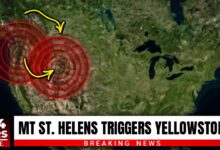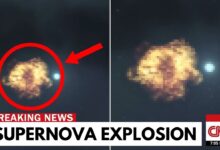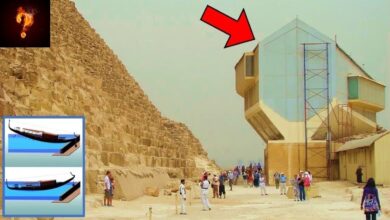Washington’s Mount Adams Rocked by Record-Breaking Earthquake

### Mount Adams in Washington: The Giant Volcano That Hides Dangers
Located in the Cascade Range, Mount Adams is one of three majestic volcanoes that are covered in ice and snow year-round, along with Mount Hood and Mount St. Helens. Although there have been no recorded eruptions in modern history, Mount Adams is considered one of the most active volcanoes in Washington state for thousands of years. With 15 confirmed eruptions in the past 10,000 years, or about once every 780 years, Mount Adams ranks fourth among stratovolcanoes in the continental United States in terms of eruption frequency.
#### Geological History and Potential Threats
Despite its seemingly peaceful appearance, Mount Adams has the potential to pose serious dangers. The main threats include:
1. **Gas Eruptions**: Eruptions often release toxic gases, posing a risk to human health and the environment.
2. **Lava Flows**: Lava from Mt. Adams can travel up to 9 miles from the summit, destroying everything in its path.
3. **Pyroclastic Flows**: Fast-moving clouds of superheated volcanic gas and debris that can travel up to 9 miles.
4. **Lahars**: These are the biggest threat, as the mountain is covered in ice. When the ice melts during eruptions, they can create massive mudflows that sweep away rocks and cause widespread damage. In the past, lahars have buried the area where the Trout Lake community is now located.
In particular, Mt. Adams has a section of its southwest flank that is weakened by hydrothermal action, which puts it at risk of collapse even without an eruption. Over the past 6,000 years, three major collapses have occurred, two of which left deposits as thick as 20 meters, and one that may have reached the Columbia River.

#### Comparison with other volcanoes
Compared to Mount Rainier and Mount St. Helens, Mount Adams has a different profile of activity and danger:
– **Mount Adams**: Known for its “mild” lava eruptions, with a volcanic explosivity index (VEI) of no more than 2. The greatest danger is from lahars and lava flows that travel far.
– **Mount Rainier**: Despite its low eruption rate, Rainier is a major hazard due to its large amount of ice, which can easily generate massive lahars that threaten densely populated areas in nearby valleys.
– **Mount St. Helens Helens**: The volcano is known for its extremely powerful eruptions, such as the 1980 explosion that produced pyroclastic flows, ash, and widespread devastation.

#### Future Forecast
Mount Adams is likely to experience a moderately explosive eruption from its summit in the future, but the exact timing is unknown. Statistical analysis suggests an eruption within the next 1,000 years. At 300 km³, Mount Adams is second only to Mount Shasta in size in the Cascade Range. Its 520,000-year history is marked by ancient eruptions from flank vents and the development of diverse volcanic formations.
#### Conclusion
Mount Adams is not the most active volcano, but given its potential hazards, it requires constant monitoring and research to minimize risks to surrounding communities and ecosystems. Lessons from the history of Mount Adams and other volcanoes in the Cascade Range are reminders of the power of nature and the importance of preparing for natural disasters.








